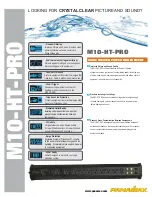
SECTION 5
TROUBLESHOOTING
18
Table 5-1. Troubleshooting Guide (Sheet 2 of 2)
PROBLEM
POSSIBLE CAUSE
CIRCUIT CHECKS
Flashing fault indicator Input voltage not 15% and -10% of
rated requirements
Excessive line impedance
Defective Inverter Control Board (ICB)
Check incoming voltage to unit - all three
phases
Check voltage TB-1 (+) to TB-4(-). See
IBR troubleshooting
Replace ICB
Continuous fault
indicator
Defective PB1/PB2
Defective Output Bridge Module (OBR1-4)
CT1/CT2 lead open
Missing shunt signal to Inverter Control
Board (ICB)
Defective ICB
See PB1/PB2 troubleshooting
See OBR troubleshooting
Disconnect P4 connector to inverter
control and make continuity check P4-1 to
P4-2/P4-4 to P4-5
See ICB troubleshooting
Replace ICB
Low welding output
Single-phase operation
Incorrect slope setting for application
Excessive welding cable length
Welding cable size too small
High resistance torch power cable
Inverter Control Board (ICB) calibration
Defective ICB
Check incoming power to unit - all three
phases
Reference VA curves and change slope
according to required output (volts and
amps)
Recommend max cable length (work and
torch) of 100 ft
Recommend 4/0 cable for MIG
applications
Replace torch if defective/use torch with
voltage pickup lead
See ICB troubleshooting
Replace ICB
Excessive welding
output
Missing arc voltage feedback to Inverter
Control Board (ICB)
ICB calibration
Defective ICB
See ICB troubleshooting
See ICB troubleshooting
See ICB troubleshooting
Volt/Amp Meter blank
or reads incorrect
M5 V at Inverter Control Board
(ICB)
Shunt calibration
Defective ICB
Defective meter
See ICB troubleshooting
Check millivolt drop across shunt - should
read 10±0.3 mV per 100 amps output
Replace ICB
Replace meter








































